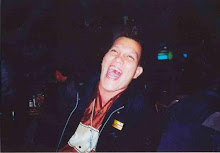P I C T U R E P E R F E C T
WORN
...oOo...
Original Picture
"Worn Out Iron Becomes A Masterpiece"
RUSTIC SHADES
Rust is scientifically called oxidation, which occurs when oxygen comes in long-term contact with certain metals. Over time, the oxygen combines with the metal at an atomic level, forming a new compound called an oxide and weakening the bonds of the metal itself. If the base metal is iron or steel, the resulting rust is properly called iron oxide. Rusted aluminum would be called aluminum oxide, copper forms copper oxide and so on. The main catalyst for the rusting process is dihydrogen oxide, but we know it better as water. Iron or steel structures may appear solid, but water molecules can easily penetrate the microscopic pits and cracks in any exposed metal. The hydrogen atoms present in water can combine with other elements to form acids, which will eventually cause more metal to be exposed. If sodium is present, as is the case with saltwater, corrosion will likely occur more quickly. Meanwhile, the oxygen atoms combine with metallic atoms to form the destructive oxide compound. As the atoms combine they weaken the metal, making the structure brittle and crumbly. Some pieces of iron or steel are thick enough to maintain their integrity even if rust forms on the surface. Others are protected by water-resistant paints or other chemical barriers such as oil. The thinner the metal, the better chance rusting will occur. Water alone does not cause steel to rust, but the acidic reaction allows oxygen to attack vulnerable exposed metal. Placing a steel wool pad in water and exposing it to air will cause almost-immediate rusting. The air around the pad will actually feel several degrees warmer. Eventually the individual iron bonds will be destroyed from the heat and the entire pad will disintegrate. Rust formation cannot be stopped easily, but metals can be treated to resist the most damaging effects.

No comments:
Post a Comment